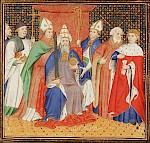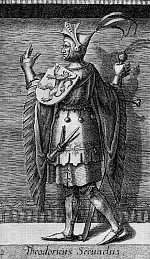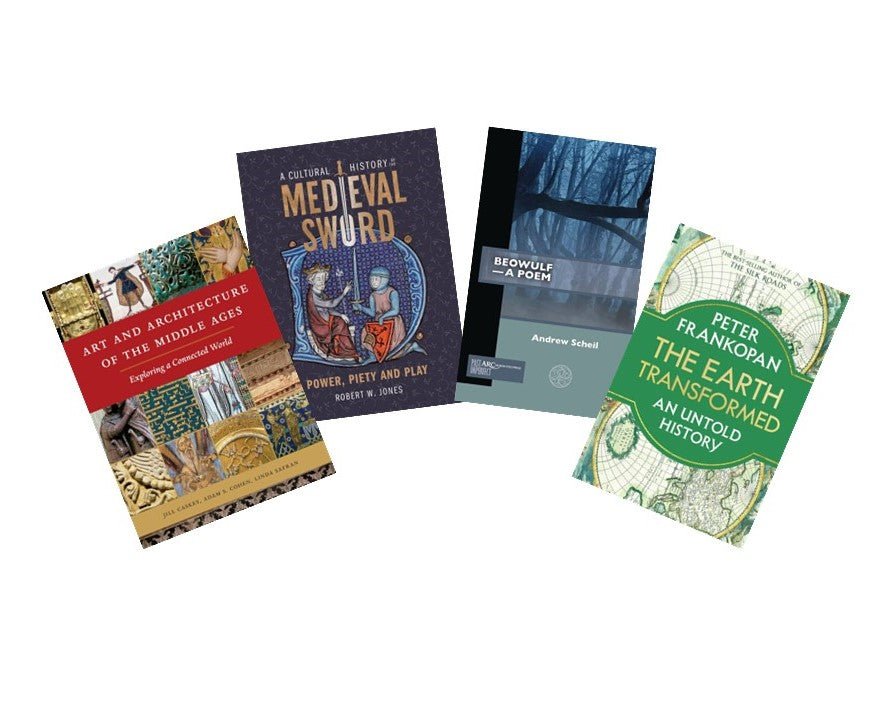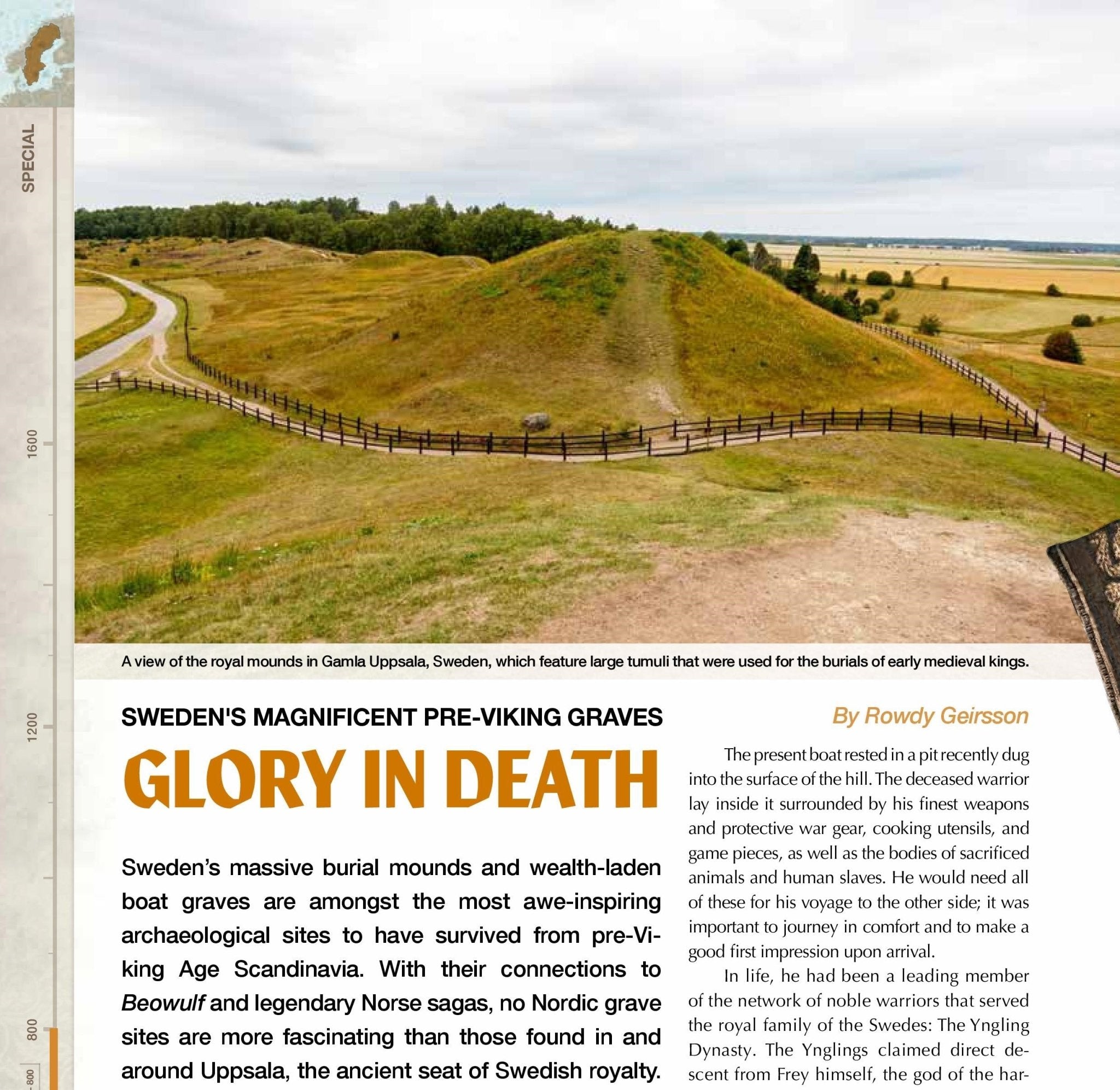To be or not to be…
During my time as a history student at the Radboud University in Nijmegen, the first two years were filled with mandatory courses. This, of course, is what one can expect when studying the sweet science of history; after all, one has to have a basic knowledge of how past events are connected. In the end, I decided to take the path of the ancient and Byzantine world, but when I started as a student, I had no idea which of the many options would swallow up most of my time in the years to come. What I did know was that not every aspect of history was equally interesting, at least not to me, and so (yes, I admit it) I wasn’t always paying as close attention to the not-always-so-captivating ramblings of my professors as I should have. That said, I often had my moments of fascination, often started with a perking of ears at the mention of a political conflict, a familiar historical name or at the sparse mention of a decisive battle (perhaps one of the main reasons I chose ancient history; after all, that period does not have many years unspoiled by tribes and peoples killing one another).
 One such moments of ear-perking was when the professor suddenly mentioned the name ‘Dirk’ during his lecture. For like half a second, I thought that I was doing something wrong/fell asleep/had accidentally trampled his favorite hamster (not to say that I ever did something like that during a lecture; not even the falling asleep part), but that was not the case. The professor was talking about the reign of several counts of Holland, a county which, during the 9th-11th centuries, was rich with marshes and bogs (and, contrary to popular belief, not filled with coffeeshops; no, not even Amsterdam, which was nothing more than marshland at the time, and quite unhealthy to live in). It turned out that the first confirmed count of Holland was a man named Dirk I, whose support of the West Frankish King Charles the Simple during a rebellion of some vassals allowed him to take the first steps towards spreading its realm.
One such moments of ear-perking was when the professor suddenly mentioned the name ‘Dirk’ during his lecture. For like half a second, I thought that I was doing something wrong/fell asleep/had accidentally trampled his favorite hamster (not to say that I ever did something like that during a lecture; not even the falling asleep part), but that was not the case. The professor was talking about the reign of several counts of Holland, a county which, during the 9th-11th centuries, was rich with marshes and bogs (and, contrary to popular belief, not filled with coffeeshops; no, not even Amsterdam, which was nothing more than marshland at the time, and quite unhealthy to live in). It turned out that the first confirmed count of Holland was a man named Dirk I, whose support of the West Frankish King Charles the Simple during a rebellion of some vassals allowed him to take the first steps towards spreading its realm.
That is, if one could call it a realm; if the county of Holland could ever have been called large, it is only within the context of the history of the Low Countries, which, as some of you may know, have never been very large to begin with, even combined. With that in mind, it is even more remarkable that there has been a period – conveniently called (by us) a Golden Age – during which we were actually very good at trading stuff, and we really had a say in world politics (yay us!). This all happened during the 80 Years War, the rebellion against Philip II of Spain (which cannot really be called medieval no matter what chronological framework one applies). That said, it might be interesting to note that the two most influential provinces/former counties within the Dutch Republic were North and South Holland. In fact, the creation of the Dutch Empire (yes, we even had something of an Empire, including possessions in Africa, both Americas and Indonesia; and did you know that New York was once called New Amsterdam, and was actually founded by the Dutch? Again, yay us!) was largely due to the commercial endeavours of Dutch merchants and, of course, the Dutch East India Company, most of whom were working from the port cities in – you guessed it – North and South Holland (and Zeeland, but let’s leave that one out of the equation for the moment).
 But that was later. In the Middle Ages, there was only one county of Holland. It did not have a major impact on world history, though it managed to stand up against larger opponents, including the Dukes of Burgundy (for some quite some time, at least) and even the Holy Roman Empire. In 1018, Holland even managed to defeat a much larger Holy Roman Army sent by Henry II to subdue this relatively independent county at the Battle of Vlaardingen.
But that was later. In the Middle Ages, there was only one county of Holland. It did not have a major impact on world history, though it managed to stand up against larger opponents, including the Dukes of Burgundy (for some quite some time, at least) and even the Holy Roman Empire. In 1018, Holland even managed to defeat a much larger Holy Roman Army sent by Henry II to subdue this relatively independent county at the Battle of Vlaardingen.
The count at the time of this battle was also a Dirk, the third of its name. You can imagine that, upon hearing about these counts who, despite ruling a marshy and probably completely irrelevant area of the world (at least within the political context of that time), managed to leave a mark (no matter how small) on the Middle Ages, I experienced something like pride. We were led to believe (not without reason) that our small country did not play any interesting part in history until the later Middle Ages, and so I was pleasantly surprised (of course, it’s nothing compared to having Napoleon or George Washington as an ancestor, but being Dutch, one learns to be content with even the little things). It even sparked some as of yet unaccomplished plans of my own to conquer what is now called the Netherlands and Belgium with my army of (also as of yet imaginative) minions (preferably small, yellow, and making funny noises) to become the wise and powerful new count Dirk VIII of the Low Countries. Of course, my job as an editor has obliged me to put these plans on hold, so the world can enjoy some peace and quiet for the time being.
If I would become the eighth count Dirk, one doesn’t have to be a rocket scientist to conclude that history counts seven. The first lived in the first half of the 10th century, while the last ruled the county during the time of Richard I, Philip Augustus, and John Lackland. In between, we find one Arnulf and several guys named Floris, the third of which died around Antioch after accompanying Frederik Barbarossa during the Third Crusade.
 I’m not going to bore you all with the meager accomplishments of each count of Holland. I would like to focus on the start of the period, as it provides us with an excellent example of how a lack of sources can really cloud our knowledge of what went on at a time. Of course, every reader of Medieval Warfare magazine will have learned (if they didn’t know already) that there are many details about medieval military history which are lost simply because we lack the sources. Sometimes we do not know the exact date of a battle, the number and nature of the warriors, etc etc. For the county of Holland, historiography may be missing a man completely.
I’m not going to bore you all with the meager accomplishments of each count of Holland. I would like to focus on the start of the period, as it provides us with an excellent example of how a lack of sources can really cloud our knowledge of what went on at a time. Of course, every reader of Medieval Warfare magazine will have learned (if they didn’t know already) that there are many details about medieval military history which are lost simply because we lack the sources. Sometimes we do not know the exact date of a battle, the number and nature of the warriors, etc etc. For the county of Holland, historiography may be missing a man completely.
Dirk I seems to have started his reign sometime between 882 and 916. It’s uncertain when he died exactly. According to one official document, he died around 922/23, after 40 years of rule, which would mean that he took his father’s seat around 882. However, another document provides evidence that his father did not die until around 895, and it is also possible that Dirk I’s death didn’t occur until 939. According to the conventional/official line of succession recorded in the history books, Dirk I was followed by Dirk II. Of the latter, historians are quite certain that he died in 988. If Dirk II came immediately after Dirk I, he would have ruled for at least 49 years (already quite long for that period), and that’s only if we were to go for the less likely date of death of his father. If Dirk II became count in 922/23, as is believed by many, he would have ruled for more than 65 years (i.e. he would have been much older than that, as there is no record of any regent taking over during the infancy of Dirk II), which would have been a remarkable accomplishment for someone living in marshy Holland without access to more advanced medicine. Of course, it’s not impossible, but not very likely either. Nowadays, historians agree. So, in order to make up for the several possibly ‘missing’ years between Dirk I and Dirk II, historians have ‘invented’ a new theoretical Dirk, called Dirk I Bis, which could have been a son of Dirk I and an older brother of Dirk II (or, he could also have been the father of Dirk II, perhaps). Nobody’s really sure about all the facts, since, let’s face it, the guy is made up; he’s a hypothesis constructed in order to solve the mystery of a possibly-too-old-Dirk II. There is no evidence whatsoever of his existence. The reason why historians can easily squeeze in another Dirk between the conventional ones is simply because the local records of the time do not record a number, just a name. So, in the 10th century at least, all sources and official documents simply mention that a certain count Dirk did this or signed that.
With that in mind, it might even be possible that there actually were even more additional Dirks. After all, we don’t know when Dirk I died and when Dirk II became count. Who knows, perhaps Dirk I Bis only held the title of count for a few years, after which he was killed by his evil twin brother/nephew/uncle, who might then be called Dirk I Dis, who, in turn, was succeeded by the real hypothetical father of Dirk II, also known as Dirk I Gis. But, if I have to be honest, this seems a little far-fetched, so I’m content to go for the new commonly accepted version of only one hypothetical namesake.




